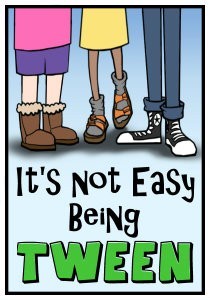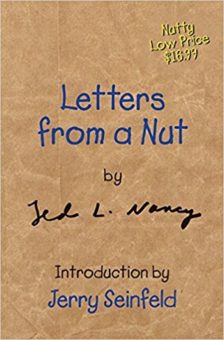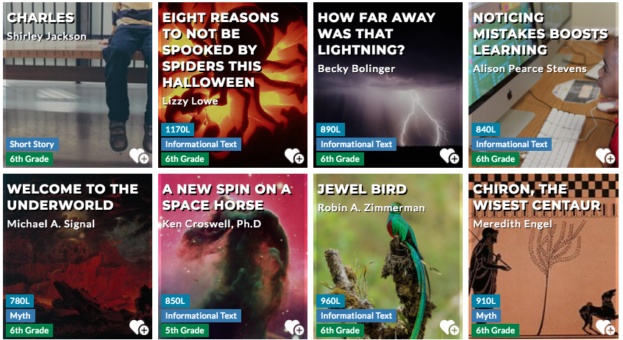Learning for All with UDL in the Classroom
A MiddleWeb Blog

Understandably, equity is always my primary concern. I feel it is my duty to ensure that all students in my class feel emotionally safe and can access the content.
For over two decades, my guiding principle has been that I teach all of my students as if they are gifted with learning differences. By that I mean that I provide opportunities for all to shine in their strength area and I vary my instruction so that all can learn and demonstrate their understanding.
At the time when I began this journey, a framework for providing this type of learning experiences was being developed — called Universal Design for Learning (UDL). Once I discovered this way of teaching and saw the impact it had on my students’ learning, I never went back.
The power of UDL
In the 1990s a group of researchers at the Center for Applied Special Technology (CAST) began studying how to use new technologies to assist students with learning difficulties. They took their cue from the concept of Universal Design in architecture where the objective is to design buildings accessible to all regardless of physical ability. The CAST researchers set an audacious goal to develop a set of principles that guided the design of inclusive classroom instruction and accessible course materials.
The result was “a framework to improve and optimize teaching and learning for all people based on scientific insights into how humans learn.” After years of classroom trials and refinement, Universal Design for Learning is gaining wider attention and praise.
It is important to know that UDL is NOT:
- Technology or devices that need to be purchased.
- Special education in a different package (although special education teachers have been using these techniques for years).
- Differentiation renamed.
- Lowering expectations.
So what is UDL? According to the CAST website, the three principles of UDL are engagement, representation, and action and expression. The principles are broken down into Guidelines, and each of these Guidelines has corresponding “checkpoints” that provide more detailed suggestions.
The UDL Guidelines provided by CAST are a tool that helps educators optimize the learning experiences they design to make those experiences accessible to all. CAST has recently revamped its entire website and built one of the most useful resources I’ve ever used. It’s called the UDL Exchange. There are more lesson-building resources on this site than one teacher could probably use in a year and it’s free to create an account.
Editor’s note (1/23/25): The CAST UDL Exchange, a platform where educators could browse and share instructional materials designed with Universal Design for Learning (UDL) principles, is now fully integrated into the main CAST website as part of their broader UDL resource library.
A resource-rich repository of universal teaching ideas
The UDL Exchange contains lessons and units in all academic areas as well as social emotional learning and life skills. Some are developed by the CAST team, but most are provided by other educators like me who see the many advantages of developing curriculum using the guidelines. I highly recommend taking a look at all they have to offer.
Seeing a new resource so chock-full of ideas can be overwhelming. My advice is to give the site a prominent bookmark, start small, and see how you can incorporate some UDL experiences in a unit you already teach. Most teachers probably already do a lot of what these guidelines suggest and don’t even realize it. The goal is to take the best things we are doing now and super-charge them with these new insights and resources.
Here’s an example from my classroom: UDL meets argumentative writing
I thought it might be helpful to see how I incorporate some UDL ideas into my Argumentative Writing Unit.
Engagement—The “Why” of Learning:
- Choice: students choose a topic to research for their argumentative writing.
- Relevance: we discuss some controversial topics of interest to them such as homework, cell phones, teen plastic surgery, etc.
- Real-World: collaboratively, students determine how they are influenced daily and by whom.
Representation—The “What” of Learning:
- Symbols: I teach my students about the modes of persuasion – ethos, pathos, and logos. Besides just the words, I use three symbols to help them relate. Ethos = raised hand, Pathos = heart, Logos = head. I then make these into hand signals that correspond to the visual representation. Every time we say these words in class, we use the hand signal.
- Metaphor/Analogy: I provide examples from movies (ex: The Wizard of Oz) and TV shows (ex: The Big Bang Theory) that illustrate characters representing ethos, pathos, and logos.
- Media: We look at magazine and online ads and TV commercials to determine what persuasive technique is being used.
- Picture Book: I read I Wanna New Room by Karen Kauffman Orloff and we discuss what persuasive techniques Alex uses in each letter to his parents. I tell them the story of when my niece was in elementary school and developed a contract explaining why she should have a cell phone and all of the conditions she would abide by and gave it to her parents. I then have students write a letter to their parents (can be real or for fun) asking for something they really want and building their case. They are always thrilled when this works!
Practice: I read a few examples from a book called Letters from a Nut by Ted L. Nancy. In it, he writes ridiculous letters to companies demanding help or restitution for outlandish grievances. My students then randomly draw four cards and no two cards are repeated. On them are an everyday item (ex: a binder), a defect (ex: leaks green liquid), a problem it caused (ex: made my dog bite me), and the restitution they demand (ex: apologize to me on national TV). They are then challenged to write a letter tying all of these together in a coherent story. This is so much fun, and they always can’t wait to share them! A different version is having them write a legitimate fan letter to a company whose product they admire. They have fun when they receive coupons or even a free gift in response.
- Practice: I divide the students into groups. I give each group a damaged or useless object (ex: a bag of black jelly beans) and a made-up group (retired department store Santa Clauses). Their job is to invent a 30-second commercial including ethos, pathos, and logos that they will then perform for the class. These are hysterical.
- Practice: Divide the classroom space in half labeled Yes and No. Give students an arguable topic such as “Homework in middle school is valuable.” Have them form an opinion and walk to the half of the classroom that represents their thoughts. Have each side work together to come up with their three strongest arguments in favor of their sides. Share and then show them how to turn this into writing using a graphic organizer. If you are finding that everyone is choosing the same side every time, then you can number them off or choose for them. Another fun idea is to have them choose a side and then instruct them to argue for the opposite opinion.
Action and Expression—The “How” of Learning
- Research: I use this opportunity to show students how to use the technological resources available at our school beyond just a quick internet search.
- Research: If your school has access, utilize websites that present material at varying levels of readability. Some of these are free (CommonLit) and some have free and paid resources (Newslea).
- Formative Assessment: Using individual white boards, show a commercial or ad, and ask students to write E, P, or L to indicate the technique used.
- Final Product Ideas on their choice topic:
- Film an infomercial or commercial
- Write and film a PSA
- Write a letter to the editor of your local paper
- Write a letter to the principal, teachers, or parents
- Write an email to a company they love or a tactful complaint email to a company whose goods failed them
- Design an infographic (either electronically or on poster board)
- Design a magazine ad
- Perform a “rant” to the class
As you can see, I have a lot of fun teaching argumentative writing and embedding UDL’s universal learning strategies. These are always some of their favorite writing assignments of the year.
What’s more, I have evidence that all of my students are grasping the material I am required to teach. No one dreads class or feels like a failure because they can all achieve the desired goal. Have fun developing your own UDL-enhanced unit!
































Wow! These activities sound like so much fun! I would love to be in a classroom like yours. Where you when I was in middle school? (Yeah, I know — you weren’t born yet. Sigh).
Debbie, I assure you I was most definitely born. We are closer in age than you suspect.
I am glad these sound like fun. I sure do love my job. :)
Thank you.
Great and practical! A super job here. I would love to hear more about other lessons that you create. I am using them to help teachers understand that planning with UDL needs a BIG picture!
Debbie, you are so kind. (And so silly). Of course I was born. LOL.
Maryann, thank you. Reach out anytime.
New teacher and on my way to obtaining my special education teaching credential by next year…crossing fingers. Stopped by and have your link now in my resources. Be good and be kind always, we have work to do!
Great recommendations! Thank you for sharing